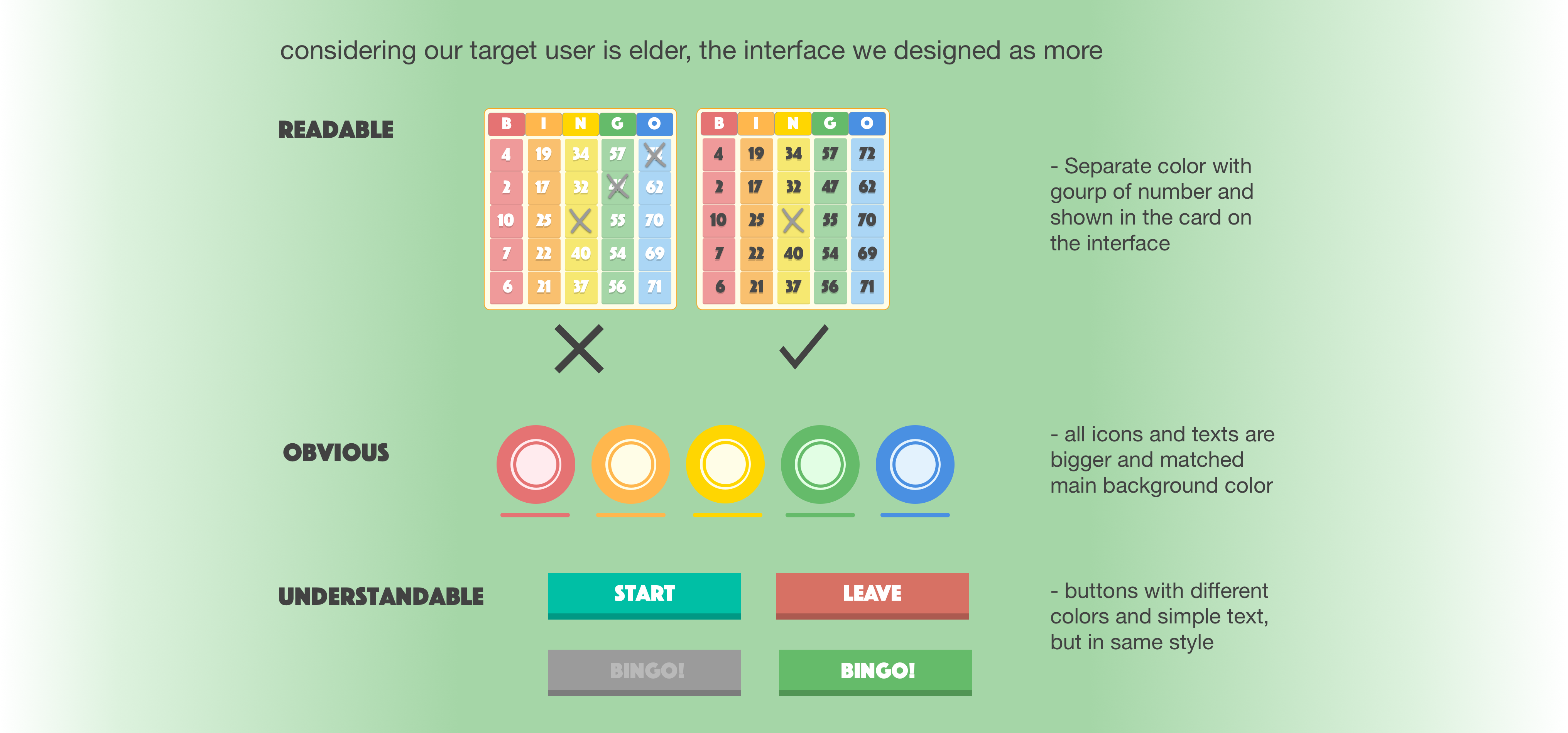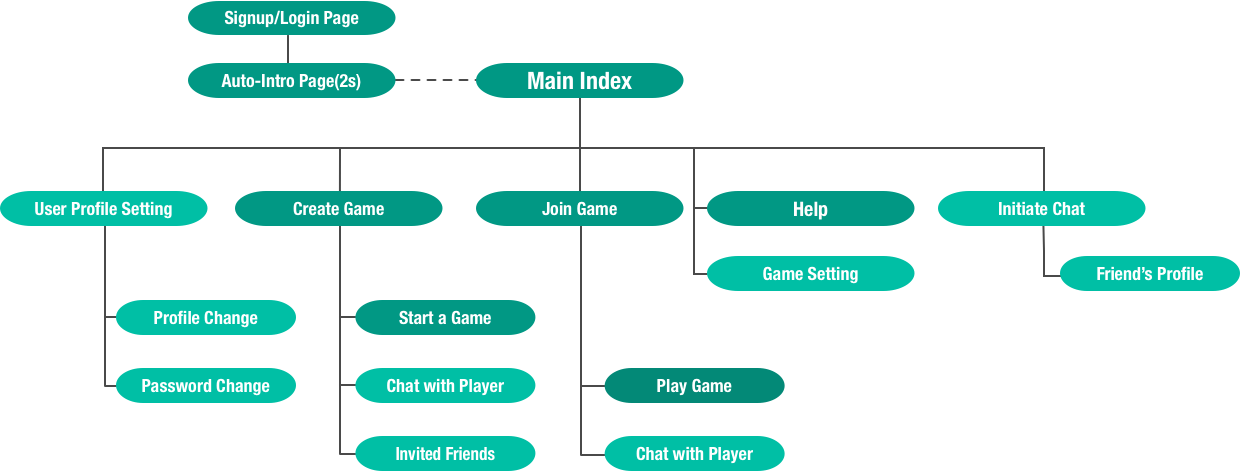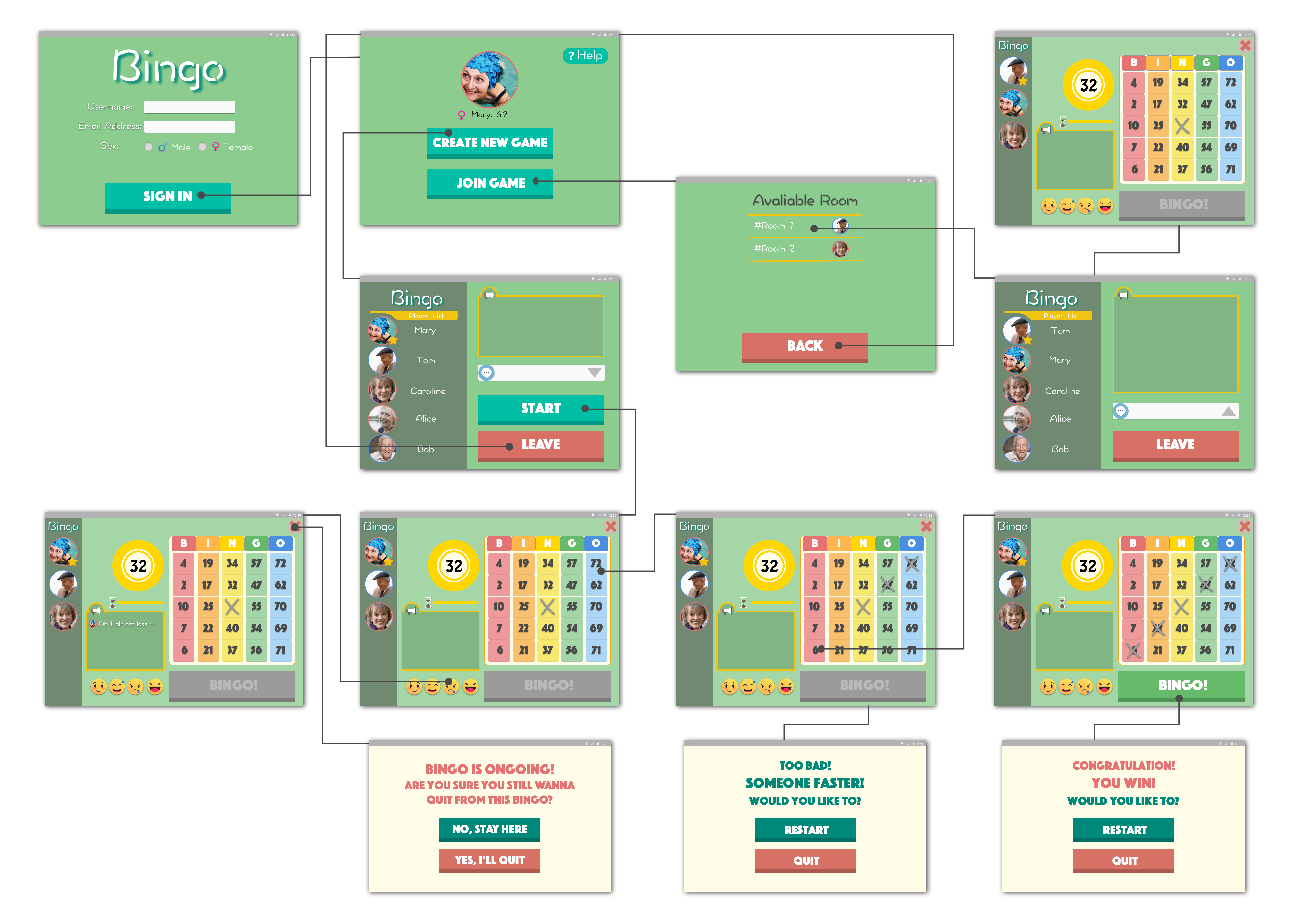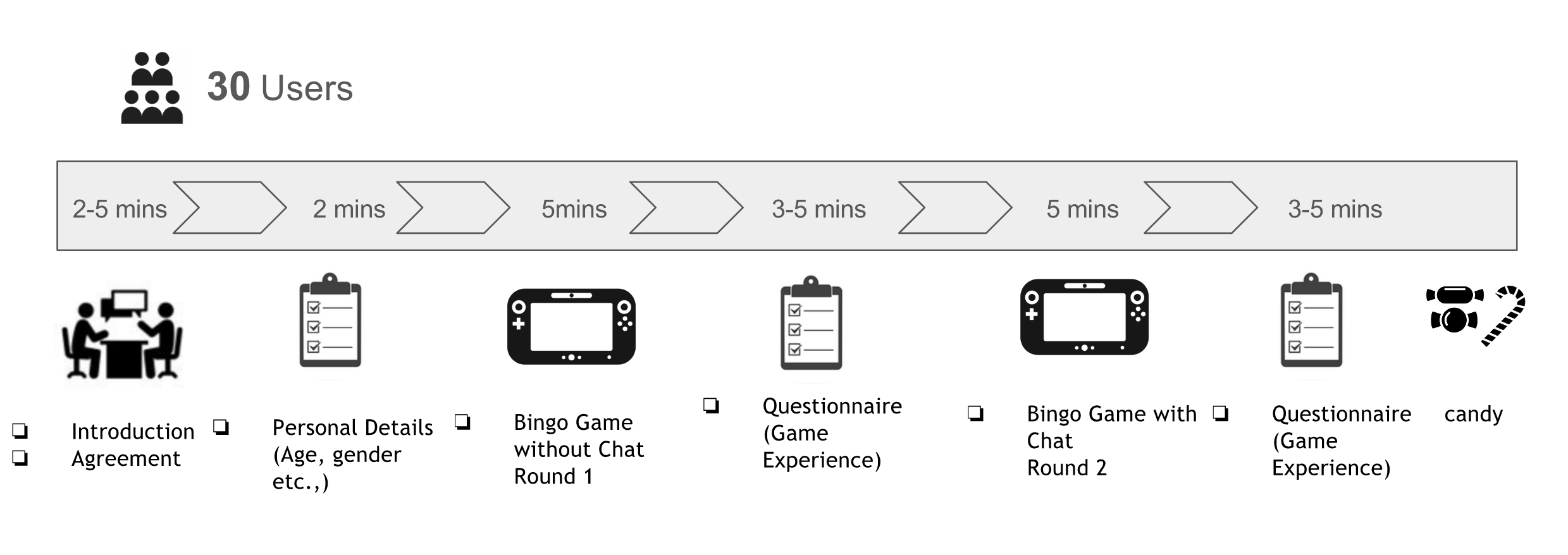Timeline
Nov.2016 - Mar. 2017

Timeline
Nov.2016 - Mar. 2017
Location
Berlin, Germany
My Role
UI&UX design
User test
Deliverables
Demo Video IntroductionIn this project our group has the aim to create an android-application, which suppose to reconnect elderly people to the society and give them the possibility to do that with the fun factor. To make the access easier and increase the acceptance, we take out any kind of seriousness and choose a game. And because of the degree of familiarity among the elderly, we chose Bingo that can be played with family, friends and even complete strangers to help them meet new people through this game and have fun while playing.
Nowadays, the age of population in the world is getting older and older. And most of them live in loneliness and isolation. The connection loss with community has negative impact psychically and physically. This demographic change grows the society of the elderly and generates problems. Therefore we want to help those people to find a way back to the community with the use of technology and let them regain some piece of quality of life.

We cannot solve the isolation problem of the elderly with an application, but we can increase the quality of somebody’s life. To achieve this we chose to design an application to reconnect the elderly to the society.
Because of the degree of familiarity not least under seniors we chose Bingo. Additionally the basic rules are quite simple, easy explained, mostly common knowledge and can easily be edited to increase fun and the replayability.

To fulfill the requirements our bingoapp offer several use-cases:


According to the use cases we defined in this application, we basically decided how is the information architecture of this tablet app looks like, and due to the time and technical limited, the dark part is our MVP in this project.

Based on the information architecture, we had agreement on the basic functionality in MVP of this game tablet app, here is our wireframe.

After the UI design and structure define, the overview of interaction flow shows as below:

For this Study we use A/B test to see if chatting function is helpful to deal with socializing problem. The participates includes 30 (25 male, 5 female) people between the age of 18 and 30.
Even though that technically elderly people are needed for this investigation, mostly students where chosen because of a lack of funds and time.
The test process shows below: There are two charts simply explained the results of this study. The first and second chart shown all non-significant dimensions and significant dimensions respectively.
There are two charts simply explained the results of this study. The first and second chart shown all non-significant dimensions and significant dimensions respectively.
 The last chart the relative improvement in percentage of the significant dimensions. Negative values are a decrease and positive values a increase compared to the first round.
The last chart the relative improvement in percentage of the significant dimensions. Negative values are a decrease and positive values a increase compared to the first round.

The goal was to reduce the isolation and loneliness of elderly people and here is an prototype that should helping to address this problem. Even in this early state of development the study shows an improvement in social bounding which will probably increase when future work is realized.
It is shown how effective notifications about the progress compared with a limited number of chat massages can be to enhance social bonds. The Bingo prototype is on a good way to be an effective tool fighting against isolation among the elderly and probably be able to have a big impact on those people.